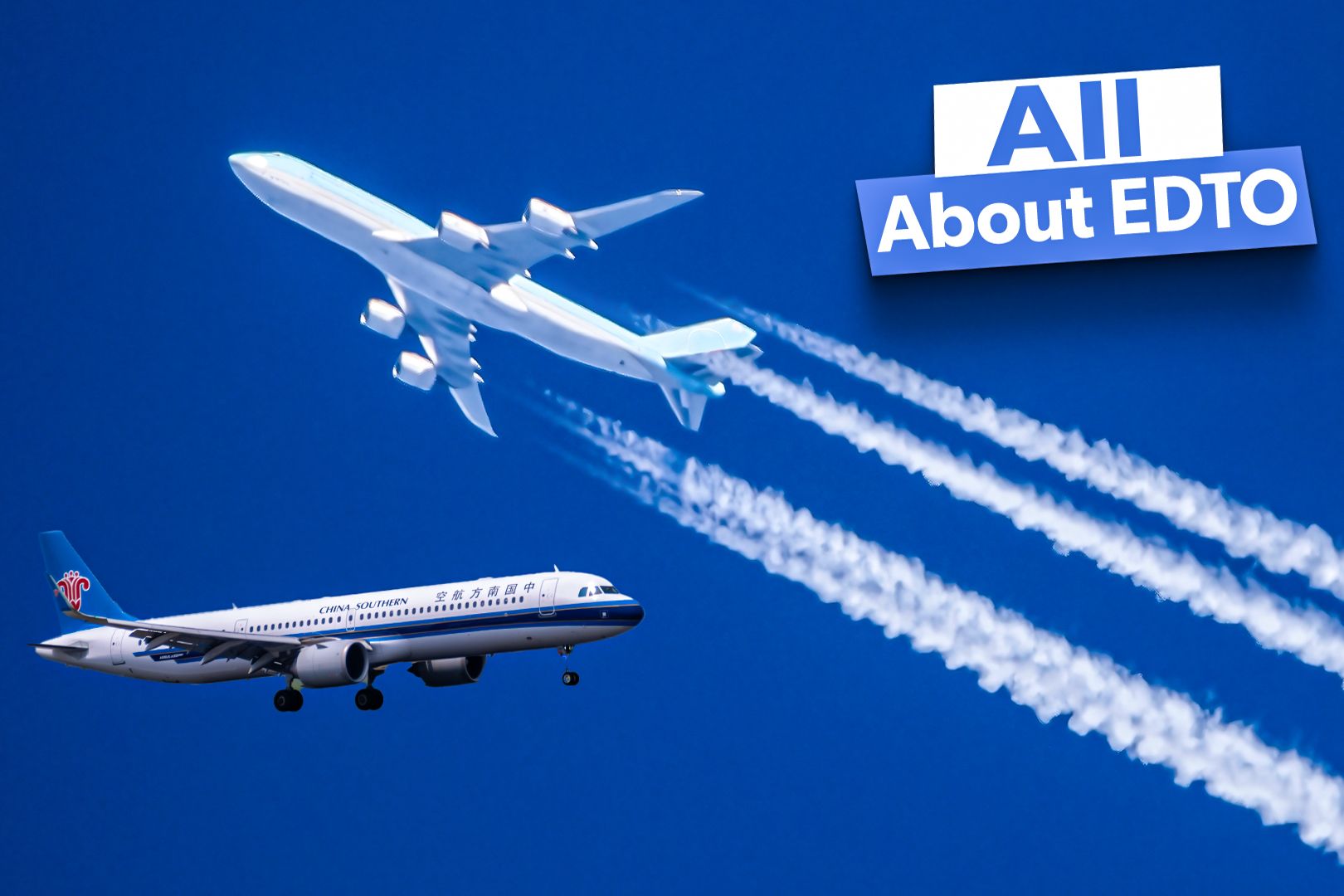Summary EDTO regulations were created for planes with two or more engines flying over remote areas to ensure safety during emergencies. Threshold time was established to determine the need for EDTO certification based on emergency landing proximity. All airlines and aircraft must seek EDTO approval from regulators for extended routes through remote areas with no en-route alternate airport within 60-minute proximity.
Modern twin-engine airliners are capable of covering great distances, like crossing the Atlantic Ocean. However, a major concern arose about what would happen if one of the engines failed and no nearby airport was available for an emergency landing. This issue led aviation regulators around the world to question the safety of twin-engine planes flying over vast oceans.

In response, a set of regulations and approvals known as ETOPS and later EDTO have been established. EDTO origin and definition According to the International Civil Aviation Organization (ICAO) , EDTO, or Extended Diversion Time Operations, is "any operation by an aeroplane with two or more turbine engines where the diversion time to an en-route alternate aerodrome is greater than the threshold time established by the State of the Operator." Simply put, this explains the rules and guidelines for planes with two or more engines on routes that are more than 60 minutes away from an emergency landing airport.
EDTO was formerly known as ETOPS (Extended-range Twin-engine Operational Performance Standards). This concept was first introduced in the 1980s to allow twin-engine aircraft to fly routes previously limited to three or four-engine aircraft. With enhancements in aircraft technology, the regulations have expanded, and the term EDTO now includes operations with aircraft having more than two engines as well.
In 2017, the ICAO decided to replace the previously used term ETOPS with EDTO to better reflect its scope and applicability. Humorously known as "engines turn or passengers swim", ETOPS has changed aviation regulations along the way. Understanding the threshold time Threshold time is the maximum period within which an aircraft must be able to reach an en-route alternate airport in case of an emergency.
For example, if an aircraft is flying from London Heathrow A (LHR) to Vilnius Airport (VNO) and suitable en-route alternates are available within this threshold time (as determined by the State of the Operator, according to ICAO), then the aircraft is not required to have EDTO certification. However, if the diversion time to an en-route alternate airport exceeds the threshold time, EDTO approval is required. Typically, the threshold time is 60 minutes, meaning that an aircraft flying from one destination to another must have an alternate airport available within 60 minutes should any emergency arise.
This is where the problem comes in, as this could mean that the aircraft might need to fly a longer route so that the airport would be within the threshold time. If the aircraft has EDTO approval, the route can be shortened. EDTO time classifications typically range from 60 to 240 minutes, meaning that an EDTO-approved aircraft can take a route where an alternate airport, in case of an emergency, could be up to 240 minutes away.
However, it is worth noting that not all aircraft receive approval for EDTO 180 or EDTO 240. In fact, EDTO 240 is the rarest. Certification is a must All aircraft and airlines must get EDTO regulatory approval if they want to fly extended routes over remote areas.
These routes could include connecting large cities in countries with vast, unpopulated areas, such as flying across Australia's outback or Siberia. This certification is usually issued by the country's civil aviation regulator. US-based airlines need to apply for this certification with the Federal Aviation Administration (FAA), which will evaluate whether the airline is prepared for EDTO flights.
UK carriers would need to apply for this certification with the UK Civil Aviation Authority (CAA), while European carriers would contact the European Union Aviation Safety Agency (EASA) to get these flights certified. Possible EDTO route examples Transatlantic flights Let's take a typical transatlantic flight from New York (JFK) to London Heathrow Airport (LHR). This route crosses the Atlantic Ocean, where diversion airports are limited.
The EDTO application would allow for extended diversion times beyond the standard 60 minutes, facilitating a more direct flight path and operational flexibility over a large body of water. Polar routes The London Heathrow (LHR) to Tokyo Haneda (HND) route is typically operated along the polar corridor. British Airways operates on this route via Scotland's Outer Hebrides, Greenland, Arctic Canada, and Alaska, crossing vast and sparsely populated areas.
Island-hoping Island-hopping routes are good examples of where EDTO approval can be beneficial. For instance, Hawaiian Airlines ' route from Honolulu (HNL) to Pago Pago (PPG) connects two islands in the South Pacific, where there are few alternate airports, making EDTO approval necessary. Bottom line EDTO-certified flights make long-haul air travel more efficient, safe, and flexible.
They help airlines reach more destinations and offer better options for both the airlines and their passengers. Here are the EDTO flight characteristics at a glance: Allows routes beyond the standard 60-minute diversion time limit Requires specific certification for safety reasons Includes rigorous crew training Regulatory approval necessary from aviation authorities like the FAA or EASA Detailed planning is needed for suitable diversion airports and emergency procedures Expands route options and can reduce operational costs with a more direct routing Inadequate pilot training is one of the most significant contributors to aircraft accidents..



















